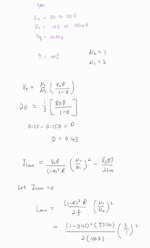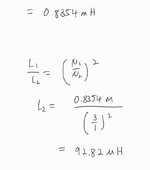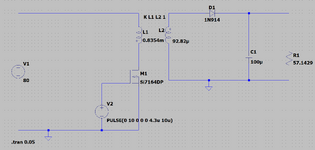Patrick_66
Member level 3
Based on the figures below, my parameters are Vin = 80 Vdc, Vout = 20 Vdc, Freq = 100 kHz, N1= 3, N2= 1. I have calculated the minimum inductance value which is around Lpri (min) = 0.8354 mH. Therefore, if I want to operate in DCM then I should set an inductance value less than Lpri (min) and if I want to operate in CCM then I should have a value higher than Lpri (min). The problem is I was able to operate in both DCM and CCM but the flyback converter failed to regulate the output voltage. I wanted to know what I had done wrong. Hope that someone can help me. Thank you.


